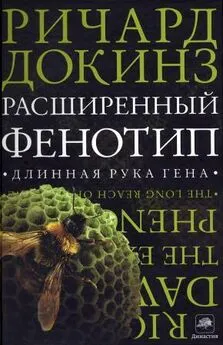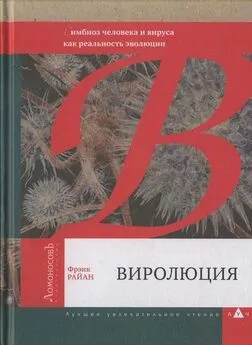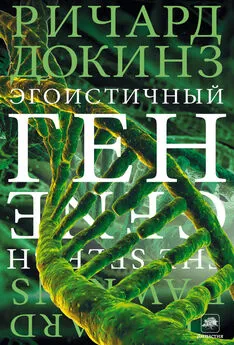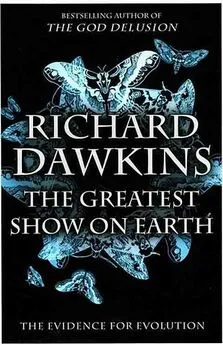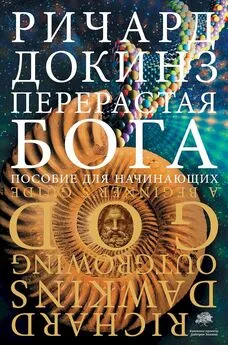Ричард Докинз - Расширенный Фенотип: длинная рука гена
- Название:Расширенный Фенотип: длинная рука гена
- Автор:
- Жанр:
- Издательство:Астрель
- Год:2010
- Город:Москва
- ISBN:978-5-271-31206-9
- Рейтинг:
- Избранное:Добавить в избранное
-
Отзывы:
-
Ваша оценка:
Ричард Докинз - Расширенный Фенотип: длинная рука гена краткое содержание
Richard Dawkins, 1982,1999 Afterword ©
Фенотип — совокупность характеристик, присущих индивиду на определённой стадии развития. Фенотип также можно определить как «вынос» генетической информации навстречу факторам среды.
Расширенный фенотип — это все воздействия, оказываемые геном на мир. Например, согласно Ричарду Докинзу, плотину бобров также как и их резцы можно считать фенотипом генов бобра. Psychedelic.
Расширенный Фенотип: длинная рука гена - читать онлайн бесплатно ознакомительный отрывок
Интервал:
Закладка:
Huxley,J. S: (1912). The individual in the Animal Kingdom. Cambridge: Cambridge University Press.
Huxley,J. S. (1932). Problems of Relative Growth. London: McVeagh.
Jacob,F. (1977). Evolution and tinkering. Science 196,1161–1166.
Janzen,D. H. (1977). What are dandelions and aphids? American Naturalist 111, 586–589.
Jensen,D. (1961). Operationism and the question «Is this behavior learned or innate?» Behaviour 17,1–8.
Jeon,K. W. & Danielli,J. F. (1971). Micrurgical studies with large free-living amebas. International Reviews of Cytology 30, 49–89.
Judson,H. F. (1979). The Eighth Day of Creation. London: Cape.
Kalmus,H. (1955). The discrimination bythe nose of the dog of individual human odours. British Journal of Animal Behaviour 3, 25–31.
Keeton,W. T. (1980). Biological Science , 3rd edn. New York: W W Norton. Kempthorne,O. (1978). Logical, epistemological and statistical aspects of nature-nurture data interpretation. Biometrics 34,1-23.
Kerr,A. (1978). The Ti plasmid of Agrobacterium. Proceedings of the 4th International Conference, Plant Pathology and Bacteriology , Angers, 101–108. Kettlewell,H. B. D. (1955). Recognition of appropriate backgrounds by the pale and dark phases of Lepidoptera. Nature 175, 943–944.
Kettlewell,H. B. D. (1973). The Evolution of Melanism. Oxford: Oxford University Press.
Kirk,D. L. (1980). Biology Today. New York: Random House.
Kirkwood,Т. B. L. & Holliday,R. (1979). The evolution of ageing and longevity. Proceedings of the Royal Society of London В 205, 531–546. Knowlton,N. & Parker,G. A. (1979). An evolutionary stable strategy approach to indiscriminate spite. Nature 279, 419–421.
Koestler,A. (1967). The Ghost in the Machine. London: Hutchinson.
Krebs,J. R. (1977). Simplifying sociobiology. Nature 267, 869.
Krebs,J. R. (1978). Optimal foraging: decision rules for predators. In Behavioural Ecology (edsJ. R. Krebs& N. B. Davies),pp. 23–63. Oxford: Blackwell Scientific.
Krebs,J. R. & Davies,N. B. (1978). Behavioural Ecology. Oxford: Blackwell Scientific.
Kuhn, T. S. (1970). The Structure of Scientific Revolutions , 2nd edn. Chicago: University of Chicago Press. {278}
Kurland,J. A. (1979). Can sociality have a favorite sex chromosome? American Naturalist 114, 810–817.
Kurland,J. A. (1980). Kin selection theory: a review and selective bibliography. Ethology & Sociohiology 1, 255–274.
Lack,D. (1966). Population Studies of Birds. Oxford: Oxford University Press. Lack,D. (1968). Ecological Adaptations for Breeding in Birds. London: Methuen.
Lacy,R. C. (1980). The evolution of eusociality in termites: a haplodiploid analogy? American Naturalist 116, 449–451.
Lande, R. (1976). Natural selection and random genetic drift. Evolution 30,314-334
Lawlor, L. R.& Maynard Smith, J. (1976).The coevolution and stability of competing species. American Naturalist 110, 79–99.
Lehrman,D.S. (1970). Semantic and conceptual issues in the nature-nurture problem. In Development and Evolution of Behavior (edsL. R. Aronson et al.),pp. 17–52. San Francisco: W H. Freeman.
Leigh,E. (1971 ). Adaptation and Diversity. San Francisco: Freeman Cooper. Leigh,E. (1977). Flow does selection reconcile individual advantage with the good of the group? Proceedings of the Motional Academy of Sciences, U.S. A. 74, 4542–4546. Levinton,J. S. & Simon,C. M. (1980). A critique of the punctuated equilibria model and implications for the detection of speciation in the fossil record. Systematic Zoology 29, 130–142.
Levy,D. (1978). Computers are now chess masters. New Scientist 79, 256–258. Lewontin,R. C. (1967). Spoken remark in Mathematical Challenges to the Neo-Darwinian Interpretation of Evolution (edsR S. Moorhead & M. Kaplan). Wistar Institute Symposium Monograph 5, 79.
Lewontin,R. C. (1970a). The units of selection. Annual Review of Ecology and Systematics 1, 1-18.
Lewontin,R. C. (1970b). On the irrelevance of genes. In Towards a Theoretical Biology , 3: Drafts (ed.C. H. Waddington),pp. 63–72. Edinburgh: Edinburgh University Press.
Lewontin,R. C. (1974). The Genetic Basis of Evolutionary Change. New York and London: Columbia University Press.
Lewontin,R. C. (1977). Caricature of Darwinism. Nature 266, 283–284. Lewontin,R. C. (1978). Adaptation. Scientific American 239 (3), 156–169. Lewontin,R. C. (1979a). Fitness, survival and optimalhy. In Analysis of Ecological Systems (edsD. J. Horn,G. R. Stairs& R. D. Mitchell),pp. 3-21. Columbus: Ohio State University Press.
Lewontin,R. C. (1979b). Sociobiology as an adaptationist program. Behavioral Science 24, 5-14.
Lindauer,M. (1961). Communication among Social Bees. Cambridge, Mass.: Harvard University Press.
Lind AUER, M. (1971).The functional significance of the honeybee waggle dance. American Naturalist 105, 89–96.
Linsenmair,K. E. (1972). Die Bedeutung familienspezifischer «Abzeichen» fur den Familienzusammenhalt bei der sozialen Wustenassel Hemilepistus rea-muri Audouin u. Savigny (Crustacea, Isopoda, Oniscoidea). Zeitschrift für Tierpsychologie 31, 131–162. {279}
Lloyd,J. E. (1975). Aggressive mimicry in Photuns: signal repertoires by femmes fatales. Science 187, 452–453.
Lloyd, J. E. (1979). Mating behavior and natural selection. Florida Entomologist 62 (1), 17–23.
Lloyd,J. E. (1981). Firefly mate-rivals mimic predators and vice versa. Nature 290, 498–500.
Lloyd,M. & Dybas,H. S. (1966). The periodical cicada problem. II. Evolution. Evolution 20, 466–505.
Lorenz, K. (1937). Uber die Bildung des Instinktbegriffes. Die Naturwissenschaften 25, 289–300.
Lorenz,K. (1966). Evolution and Modification of Behavior. London: Methuen. Love,M. (1980). The alien strategy. Natural History 89 (5), 30–32.
Lovelock,J. E. (1979). Gaia. Oxford: Oxford University Press.
Lumsden,C. J. & Wilson,E. O. (1980). Translation of epigenetic rules of individual behavior into ethnographic patterns. Proceedings of the National Academy of Sciences, U.S.A. 77, 4382–4386.
Lyttle,T. W. (1977). Experimental population genetics of meiotic drive systems. I. Pseudo-Y chromosomal drive as a means of eliminating cage populations oiDrosophila melanogaster. Genetics 86, 413–445.
Me С leery,R. H. (1978). Optimal behaviour sequences and decision making. In Behavioural Ecology (edsJ. R. Krebs& N. B. Davies),pp. 377–410. Oxford: Blackwell Scientific.
McFarland,D. J. & Houston,A. I. (1981). Quantitative Ethology. London: Pitman.
McLaren,A., Chandler,P., Buehr,M., Fierz,W. & Simpson,E. (1981). Immune reactivity of progeny of tetraparental male mice. Nature 290,513–514. Manning,A. (1971). Evolution of behavior. In Psychobiology (ed.J. L. McGaugh),pp. 1-52. New York Academic Press.
Margulis,L. (1970). Origin of Eukaryotic Cells. New Haven: Yale University Press.
Margulis,L. (1976). Genetic and evolutionary consequences of symbiosis. Experimental Parasitology 39, 277–349.
Margulis,L. (1981). Symbiosis in Cell Evolution. San Francisco: W H. Freeman.
Maynard Smith,J. (1969). The status of neo-Darwinism. In Towards a Theoretical Biology, 2: Sketches (ed.C. H. Waddington),pp. 82–89. Edinburgh: Edinburgh University Press.
Maynard Smith,J. (1972). On Evolution. Edinburgh: Edinburgh University Press.
Maynard Smith, J.(1974). The theory of games and the evolution of animal conflicts. Journal of Theoretical Biology 47, 209–221.
Maynard Smith, J.(1976a). Group Selection. Quarterly Review of Biology 51, 277–283.
Maynard Smith, J. (1976b).What determines the rate of evolution? American Naturalist 110, 331–338.
Maynard Smith, J.(1977). Parental investment: a prospective analysis. Animal Behaviour 25, 1–9.
Maynard Smith, J.(1978a). The Evolution of Sex. Cambridge: Cambridge University Press.
Maynard Smith, J.(1978b). Optimization theory in evolution. Annual Review of Ecology and Systematics 9, 31–56. {280}
Maynard Smith, J. (1979).Game theory and the evolution of behaviour. Proceedings of the Royal Society of London , В 205, 475–488.
Maynard Smith, J.(1980). Regenerating Lamarck. Times Literary Supplement No. 4047, 1195.
Maynard Smith,J. (1981). Macroevolution. Nature 289,13–14.
Maynard Smith,J. (1982) The evolution of social behaviour — a classification of models. In Current Problems in Sociohiology (ed. King’s College Sociobiology Group),pp. 29–44. Cambridge: Cambridge University Press. Maynard Smith,J. & Parker,G. A. (1976). The logic of asymmetric contests. Animal Behaviour 24,159–175.
Maynard Smith,J. & Price,G. R. (1973). The logic of animal conflict. Nature 246,15–18.
Maynard Smith,J. & Ridpath,M. G. (1972). Wife sharing in the Tasmanian native hen, Tnbonyx mortiern: a case of kin selection? American Naturalist 106, 447–452.
Mayr,E. (1963). Animal Species and Evolution. Cambridge, Mass.: Harvard University Press.
Medawar,P. B. (1952). An Unsolved Problem in Biology. London: H. K. Lewis. Medawar,P. B. (1957). The Uniqueness of the Individual. London: Methuen. Medawar,P. B. (i960). The Future of Man. London: Methuen.
Читать дальшеИнтервал:
Закладка:
